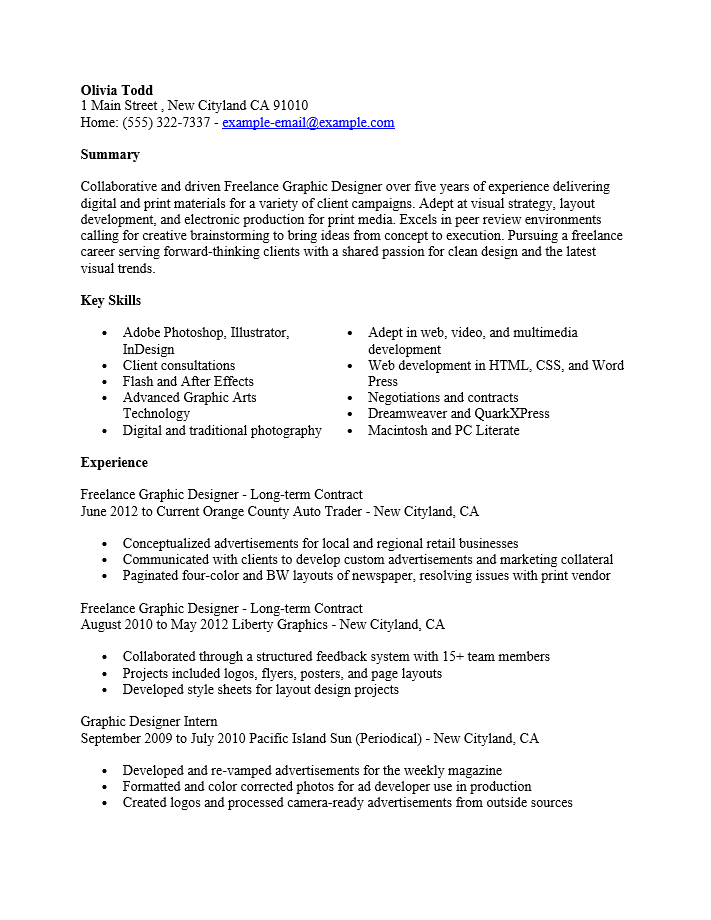

Remember, you can always use a management platform or software, like Indy, to help keep track of all those small details if it becomes too much to handle on your own. Many times, even if you’re working sporadic hours, you’ll end up working more than just 40 hours a week. If you’re trying to meet a deadline or send an invoice, that could mean some long nights or early mornings. So what does the life of a graphic designe r look like? Be prepared to work long hours and give up personal time. This is especially true when you’re just starting out. Even if you’re not working the typical 9-5, that doesn’t mean you won’t still be working 40 hours or more a week. Not Working the Typical 9-5 Doesn’t Mean Fewer Hours With a normal business, there would be trained professionals to take care of each individual role, but with freelancing, everything is in your hands. It’s a huge amount of responsibility for one person to take on. It’s important to stay on top of everything while continuing to produce high-quality work that clients love. If you get behind on your billing, that means no pay that month. Some graphic designers might not be prepared for all the responsibilities that come with this. Since you’re the business, you are also the HR, billing, and marketing departments. If you’re a graphic designer deciding whether to take the leap into the freelance world, these are some of the major pitfalls and the major perks that come with working as a freelancer. As with any business, there are always pros and cons. When you freelance, you become your own business.

I’m here to tell you there’s more to it than just doing the work you love. The Pros and Cons of Becoming a Freelance Graphic Designerīeing a freelance graphic designer might sound like a dream - you get to create your own hours, be your own boss, and work on projects you’re passionate about. Having a great portfolio that shows off your skills and style is a great way to break into the field of graphic design and start landing your first few clients.

It also demonstrates that you have the skills and experience you need to do the type of work that they're hoping to accomplish. Having a strong portfolio allows potential clients to see whether your aesthetic might be a good fit for them. The most important qualification that a graphic designer must have is a portfolio, which is a collection of that designer's work. Competitive graphic designers are also well-versed in using a variety of computer programs, such as Illustrator, Photoshop, and more. To strengthen their artistic skills, designers should take art and design classes, as well as courses in additional skills such as web design and printing techniques.įurthermore, many colleges and universities offer classes in marketing and business, which are valuable skills for any graphic designer to possess. These statistics prove one main point: if the idea of freelancing your way to success as a graphic designer intrigues you, you're not alone!īecoming a graphic designer often requires some formal training, as a bachelor's degree in graphic design is sometimes required, although an increasing number of designers are self-taught too. Some similar occupations to graphic designers include art directors and fine artists. The median wage for graphic designers in May 2019 was $52,110. They must also be able to generate designs for a wide variety of media, including social media, in order to establish a strong and clear brand identity.Ī significant number of graphic designers are freelancers, with labor statistics indicating that 21% of graphic designers in the US in 2019 identified as being self-employed. In practice, this might translate into designing a logo or developing a brand identity for a company, selecting colors and typefaces to create a coherent web design, or generating designs for brochures or pamphlets.īecause graphic designers work with both text and images, they need to be able to incorporate both into their designs. Simply put, graphic designers create visual concepts for brands that they can use to communicate ideas to their consumers. With this information under your belt and a little bit of hard work, there's no limit to what you can accomplish as a freelance graphic designer. This guide is designed to help introduce you to the world of graphic design by describing what graphic designers do and explaining what qualifications they need, diving into the pros and cons, and answering some common questions about the current state of the graphic design industry. Whether you're just starting out in graphic design or you're an experienced designer hoping to become a full- or part-time freelancer, navigating the graphic design industry can be a challenge.


 0 kommentar(er)
0 kommentar(er)
